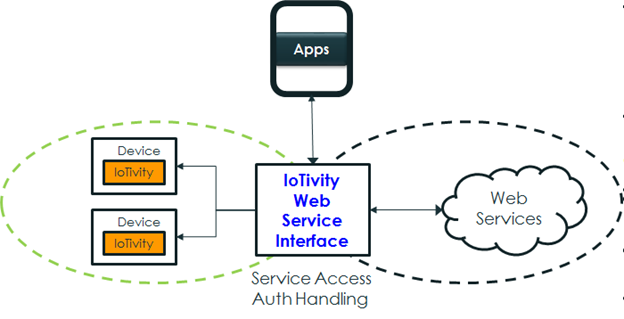...
The realization of the above use cases is enabled through an architecture called the “Web Service Interface (WSI)”. With the WSI approach, we did not try to take data from IoT devices or the automobile into the cloud. What we wanted to do was to provide a way for services and applications to be represented within the IoT network and to bring the execution of the rules from the cloud to inside the IoT network. This approach helped us to represent ANY service in a consistent manner thereby easing the handling of protocol, ownership, privacy, security and ease of use concerns.
6.6.4 How RVI models Vehicle Information as a Spec.
As explained in the section <<RVI Section>>, RVI seperates the vehicle service data representation from the transport. The "Vehicle Signal Specification" is a simple, flexible and scalable format to represent vehicle signals inside a vehicle using a simple tree like hierarchy. RVI Core stack handles the software infrastructure needed to discover other RVI endpoints and handling of end to end delivery of messages, i.e. the transport agnostic communications infrastructure.
6.6.5 Vehicle Connectivity as a Service?
...
In this context, the RVI Expert Group within Genivi had an open source software in place for many important vehicle connectivity use cases which we could readily use for representing vehicle connectivity as a service within the WSI architecture. This extends the connectivity services hosted by the vehicle to be accessed by IoT devices inside the smart home.
6.6.6 Demo Showcase Setup
...
